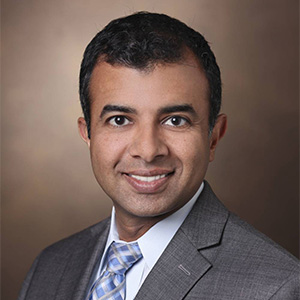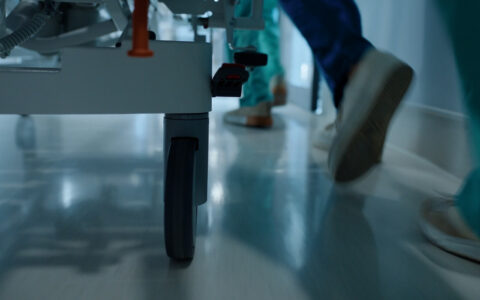Three targeted research projects aimed at improving hospital models of care delivery are coming together at Vanderbilt University Medical Center.
Researchers studying staffing allocation models for both registered and unregistered nurses serving hospitalized elderly patients will intersect with an initiative exploring how hospitals can effectively address social drivers of health (SDOH) to improve patient outcomes. The funding came through grants from the Tennessee Department of Health,
“There’s been a nursing shortage for some time – in hospitals and nursing homes – and the pandemic exacerbated it,” said Sandra Simmons, Ph.D., director of the Vanderbilt Center for Quality Aging. “We’ve lost many experienced nurses. This has created a huge need to reexamine and improve nurse utilization.”
Joining Forces
Simmons and her team are developing staffing simulation models to find ways to improve hospital care for older patients to better prevent falls and improve health outcomes post-discharge. The models will cover discharges from the hospital and nursing home settings.
“When this funding mechanism came along, … we realized we could take the work we were already doing and strengthen it with dedicated resources.”
“The goal is to objectively determine the staffing resources necessary to support clinical care and patient safety,” she said.
While collecting data for their study, the team connected with the Medical Center’s nursing leadership team, who were also studying optimum hospital nurse and care-partner allocations.
“We were evaluating training for novice nurses and retention of existing nurses,” said Ruth Kleinpell, Ph.D., associate dean for clinical scholarship and interim associate dean for research at Vanderbilt School of Nursing. “Our goal was to develop a mentorship plan – a model of nursing care that would partner a senior nurse with a novice nurse.”
Several Vanderbilt programs were tied into the research: an Acute Care for the Elderly (ACE) unit; a two-year-old hospital discharge care center; an outpatient clinic run by nurse practitioners and residents; and intervention studies aimed at preventing hospital readmissions.
“When this funding mechanism came along, it was really fortuitous,” Kleinpell added. “We realized we could take the work we were already doing and strengthen it with dedicated resources.”
Both teams were also evaluating SDOH screening by nurses: how to fit routine screening into the workstream, and which nurses were best situated to do the screening.
“New requirements came from the Joint Commission that hospitals need to incorporate SDOH screening, so we thought it would be a good time to focus on our processes here,” Kleinpell said.
Capturing Social Impact
Meanwhile, another Vanderbilt team was considering how to address SDOH and what questions should be included in routine screening for hospitalized patients. Under the new grant, their work will dovetail with the two nursing studies.
“It’s important for health care teams to know what social risk factors their patients are experiencing and how that can be incorporated into decision-making.”
“The past few years have brought significant attention to the impact of SDOH,” said Sunil Kripalani, M.D., director of clinical quality and health services research at Vanderbilt. “Patients with economic or other social needs have a higher risk for poor health outcomes and hospital readmission.”
Kripalani says that these studies will inform how to broadly incorporate SDOH into the normal operations of the hospital.
“Many patients have told us they’d like their health care professionals to be aware of their social risk factors, but there are a lot of barriers,” Kripalani added.
Beyond the obvious time constraints, he says, there’s not one staff position responsible for collecting this data, and not all staff have received formal training in how to respond appropriately to sometimes challenging circumstances patients describe.
His team is exploring the best methods for capturing and disseminating SDOH data across departments. This includes evaluating five key measures (social domains) built into the EPIC Systems EHR, as well as other standardized screening tools.
“It’s important for health care teams to know what social risk factors their patients are experiencing and how that can be incorporated into decision-making with patients and families,” said Kripalani. “It leads to more personalized care for the patient.”
Expanding Patient Outreach
Kleinpell says the routine collection of SDOH data will improve patient care beyond the hospital.
“Screening for social drivers is something that ideally we should do for everybody.”
“We want to identify what assistance patients would like to receive post-discharge and to provide that assistance,” she said. “We’ve learned that even those who acknowledge they have needs may not want a referral or don’t live near services. Through the Vanderbilt Office of Health Equity, we’re working with community partners on needs assessment.”
“Screening for social drivers is something that ideally we should do for everybody,” Simmons said. “This grant will help us develop a better understanding of the best way to go about gathering these data.”







